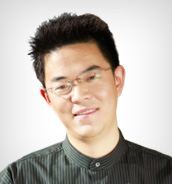2013年12月英语六级(新题型)考试冲刺试卷一
| 第 1 页:写作 |
| 第 2 页:听力 |
| 第 5 页:选词填空 |
| 第 6 页:快速阅读 |
| 第 7 页:仔细阅读 |
| 第 8 页:翻译 |
| 第 9 页:参考答案 |
Section C
Directions: There are 2 passages in this section. Each passage is followed by some questions or unfinished statements. For each of them there are four choices marked A), B), C) and D ). You should decide on the best choice and mark the corresponding letter on Answer Sheet 2 with a single line through the centre.
56、回答56-61题:
Opinion polls are now beginning to show a reluctant consensus that, whoever is to blame and whatever happens from now on, high unemployment is probably here to stay. This means we shall have to find ways of sharing the available employment more widely. But we need to go further. We must ask some fundamental questions about the furore of work. Should we continue to treat employment as the norm? Should we not rather encourage many other ways for self-respecting people to work? Should we not create conditions in which many of us can work for ourselves, rather than for an employer7 Should we not aim to revive the household and the neighborhood, as well as the factory and the office, as centers of production and work?
The industrial age has been the only period of human history in which most people's work has taken the form of jobs. The industrial age may now be coming to an end, and some of the changes in work patterns which it brought may have to be reversed. This seems a daunting thought. But, in fact, it could offer the prospect of a better future for work. Universal employment, as its history shows, has not meant economic freedom.
Employment became widespread when the enclosures of the 17th and 18th centuries made many people dependent on paid work by depriving them of the use of the land, and thus of the means to provide a living for themselves. Then the factory system destroyed the cottage industries and removed work from people's homes. Later, as transport improved, first by rail and then by mad, people commuted longer distances to their places of employment until, eventually, many people's work lost all connection with their home lives and the places in which they lived.
Meanwhile, employment put women at a disadvantage. In pre-industrial times, men and women had shared the productive work of the household and village community. Now it became customary for the husband to go out to paid employment, leaving the unpaid work of the home and the family to his wife. Tax and benefit regulations still assume this norm today, and restrict more flexible sharing of work roles between the sexes.
It was not only women whose work status suffered. As employment became the dominant form of work, young people and old people were excluded--a problem now, as more teenagers become frustrated at school and more retired people want to live active lives.
All this may now have to change. The time has certainly come to switch some effort and resources away from the utopian goal of creating jobs for all, to the urgent practical task of helping many people to manage without full- time jobs.
According to the author, the universal employment has _______.
A.turned out not to be the best form of jobs
B.created an alternative form of jobs
C.built the foundation of an economic leap
D.failed to produce job opportunities for most people
57、Modem forms of transportation have greatly encouraged_______.
A.the phenomenon of deprivation of employees' leisure time
B.the disconnection between people's work and their family life
C.the commutation between the working places and employees' homes
D.people's desire to work far away from where they were born
58、It can be inferred from the passage that _______.
A.women could have been more productive than men in a proper job system
B.work in pre-industrial times has been distriibuted evenly between men and women
C.paid employment has aroused serious social problems in current society
D.women have been treated unfairly under the employment system of industrial age
59、What is the problem for the young under the employment system?
A.They are less likely to compete with the aged.
B.They are much worried about the generation gap.
C.They are more likely to suffer from unemployment.
D.Their academic performances seem useless for job hunting.
60、What is the possible change of job forms?
A.Full-time employment will not be the dominant form of work.
B.Most people can work at home and for themselves.
C.The differences between men and women will disappear.
D.All people get equal job opportunities and equal pay.
61、回答{TSE}题:
Blood vessels running all through the lungs carry blood to each air sac (囊), or alveolus(肺泡), and then back again to the heart. Only the thin wall of the air sac and the thin wall of a capillary (毛细血管) are between the air and the blood. So oxygen easily diffuses from the air sacs through the walls into the blood, while carbon dioxide easily diffuses from the blood through the walls into the air sacs.
When blood is sent to the lungs by the heart, it has come back from the cells in the rest of the body. So the blood that goes into the wall of an air sac contains much dissolved carbon dioxide but very little oxygen. At the same time, the air that goes into the air sac contains much oxygen but very little carbon dioxide. You have learned that dissolved materials always diffuse from where there is more of them to where there is less. Oxygen from the air dissolves in the moisture on the lining of the air sac and diffuses through the lining into the blood. Meanwhile, carbon dioxide diffuses from the blood into the air sac. The blood then flows from the lungs back to the heart, which sends it out to all other parts of the body.
Soon after air goes into an air sac, it gives up some of its oxygen and takes in some carbon dioxide from the blood. To keep diffusion going as it should, this carbon dioxide must be gotten rid of. Breathing, which is caused by movements of the chest, forces the used air out of the air sacs in your lungs and brings in fresh air. The breathing muscles are controlled automatically so that you breathe at the proper rote to keep your air sacs supplied with fresh air. Ordinarily, you breathe about twenty-two times a minute. Of course, you breathe faster when you are exercising and slower when you are resting. Fresh air is brought into your lungs when you breathe in, or inhale (吸入), while used air is forced out of your lungs when you breathe out, or exhale.
Some people think that all the oxygen is taken out of the air in the lungs and that what we breathe out is pure carbon dioxide. But these ideas are not correct. Air is a mixture of gases that is mostly nitrogen(氮). This gas is not used in the body. So the amount of nitrogen does not change as air is breathed in and out. But while air is in the lungs, it is changed in three ways: ( 1 ) About one-fifth of the oxygen in the air goes into the blood. (2) An almost equal amount of carbon dioxide comes out of the blood into the air. (3) Moisture from the linings of the air passages and air sacs evaporates until the air is almost saturated.
It can be inferred from the passage that oxygen and carbon dioxide _______.
A.produce energy for breathing
B.diffuse immediately in the blood
C.penetrate slowly into the air sacs
D.travel in opposite ways in the lungs
62、When blood travels back to the lungs by the heart, ________.
A.more oxygen was contained in blood
B.more carbon dioxide was contained in the blood
C.less carbon dioxide was contained in an air sac
D.less oxygen was contained in an air sac
63、The movement of breathing can effectively ________.
A.help the exchange of oxygen and carbon dioxide in the lungs
B.prevent the inhaling of excessive carbon dioxide
C.keep the regular circulation of blood
D.strengthen the function of breathing muscles
64、When we breathe out, the amount of nitrogen ________.
A.increases a bit because of the exchange of air
B.reduces a bit because of the exchange of air
C.remains the same as we breathe it in
D.keeps the same as that needed in lungs
65、The air in the lungs changes through ________.
A.inhaling some amount of oxygen
B.the evaporation of moisture
C.exhaling some amount of carbon dioxide
D.generating a passage for evaporation Part IV
编辑推荐:
·2013年12月英语六级(新题型)考试冲刺试卷五 (2013-12-3 8:41:44)
·推荐:12月英语六级改革后新题型冲刺备考汇总 (2013-12-12 9:41:39)
·2013年12月英语六级考前冲刺试题11套(新题型) (2013-12-4 10:01:15)
·2013年12月英语六级(新题型)考试冲刺试卷四 (2013-11-30 17:40:35)
·2013年12月英语六级(新题型)考试冲刺试卷三 (2013-11-30 17:22:22)
- 卢根
- 屠皓民
- 曹倩
- 赵丽
2013年12月英语六级新题型冲刺卷(四)在…
2013年12月英语六级新题型冲刺卷(三)在…
2013年12月英语四级考试(新题型)冲刺试卷…
2013年12月英语四级考试(新题型)冲刺试卷…
2013年12月英语六级新题型冲刺卷(二)在…
2013年12月英语四级考试(新题型)冲刺试卷…
2013年12月英语六级新题型冲刺卷(一)在…
2013年12月英语四级考试(新题型)冲刺试卷…
2012年12月英语四级考前全真模拟试题(1)
| 北京 | 天津 | 上海 | 江苏 | 山东 |
| 安徽 | 浙江 | 江西 | 福建 | 深圳 |
| 广东 | 河北 | 湖南 | 广西 | 河南 |
| 海南 | 湖北 | 四川 | 重庆 | 云南 |
| 贵州 | 西藏 | 新疆 | 陕西 | 山西 |
| 宁夏 | 甘肃 | 青海 | 辽宁 | 吉林 |
| 黑龙江 | 内蒙古 |
考试吧:大学英语四六级考试改革全面解读
2014年大学英语四级七大类型作文模板汇总
2014年6月英语四级翻译新题型汇总
2014年6月英语四级图表作文模板:手机用量
2014年6月英语四级听力练习1(附音频)
2014年大学英语四级七大类型作文模板:讨论观
2014年6月大学英语四级词汇试题讲解1
2014年6月英语四级听力练习汇总(附音频)
2014年6月大学英语四级词汇试题讲解汇总
·执业医师考试培训 试听 ·经济师考试培训 试听
·执业药师考试培训 试听 ·报关员考试培训 试听
·银行从业考试培训 试听 ·会计证考试培训 试听
·证券从业考试培训 试听 ·华图公务员培训 试听
·二级建造师考试培训 试听 ·公务员培训 网校 试听
·一级建造师考试培训 试听 ·结构师考试培训 试听
·注册建筑师考试培训 试听 ·造价师考试培训 试听
·质量资格考试培训 试听 ·咨询师考试培训 试听
·卫生职称考试培训 试听 ·监理师考试培训 试听
| 在职攻硕英语 | 职称日语 | 日语学习 | 法语 | 德语 | 韩语
| 人力资源管理师 | 心理咨询师 | 物流师考试 | 管理咨询师考试 | 价格鉴证师考试 | 出版专业资格考试 | 广告师职业水平 | 驾驶员资格考试 | 网络编辑考试
| 公共营养师 | 国际货运代理人 | 保险从业资格 | 电子商务师 | 普通话 | 企业培训师 | 营销师 | 特岗教师
| 精算师考试 | ACCA | 企业法律顾问 | 理财规划师 | 国际内审师 | 高级经济师
| 一级注册建筑师 | 二级注册建筑师 | 安全评价师 | 设备监理师 | 岩土工程师 | 质量工程师 | 房地产经纪人考试 | 投资项目管理师 | 土地登记代理人
| 环保工程师 | 物业管理师 | 环境影响评价师 | 城市规划师 | 公路监理工程师 | 公路造价师 | 设备监理师 | 招标师 | 电气工程师 | 注册测绘师考试
| 注册计量师考试 | 注册化工工程师考试 | 注册暖通工程师考试 | 注册给排水工程师考试
实用文档 | 入党资料 | 入党申请书 | 入党志愿书 | 个人自传 | 转正申请书 | 思想汇报 | 个人简历 | 简历模板 | 简历封面 | 工作计划 | 工作总结 | 自我评测
个性评测 | 社交评测 | 事业评测 | 运势评测 | 报告 | 实习报告 | 工作总结 | 社会实践 | 心得体会 | 述职报告 | 调查报告 | 辞职报告
法律文书 | 合同范本 | 演讲范文 | 更多>>
英语学习 | 听力口语 | 阅读写作 | 翻译文化 | 趣味英语 | 学习方法 | 英文经典歌曲 | 每日课堂 | 空中英语 | 少儿英语 | 影视英语 | 英文歌曲 | 更多>>
作文大全 | 作文 | 小学 | 初中 | 高中 | 话题 | 考研 | 四六级 趣味 | 体裁作文 | 记叙文 | 议论文 说明文 | 应用文 | 读后感 | 素材作文 | 名言警句 | 优美段落
哲理故事 | 诗词赏析 | 成语知识 | 技巧 | 写作指导 | 作文点评 | 佳文赏析 | 写作基础 | 话题演练 | 作文教学 | 更多>>
求职招聘 | 招聘 | 事业单位招聘 | 教师招聘 | 校园招聘 | 社会招聘 | 大学生求职 | 简历 | 简历封面 | 简历模板 | 职场 | 职场规划 | 职前充电 | 更多>>
论文下载 | 经济学论文 | 财政税收论文 | 证券金融论文 | 财务管理论文 | 法学论文 | 理学论文 | 医药学论文 | 计算机论文 | 艺术类论文 | 哲学论文 | 文化论文
管理学论文 | 会计审计论文 | 工商管理论文 | 公共管理论文 | 工学论文 | 文学论文 | 社会学论文 | 教育类论文 | 应用文论文 | 英语论文 | 写作指导
政治论文 | 更多>>






